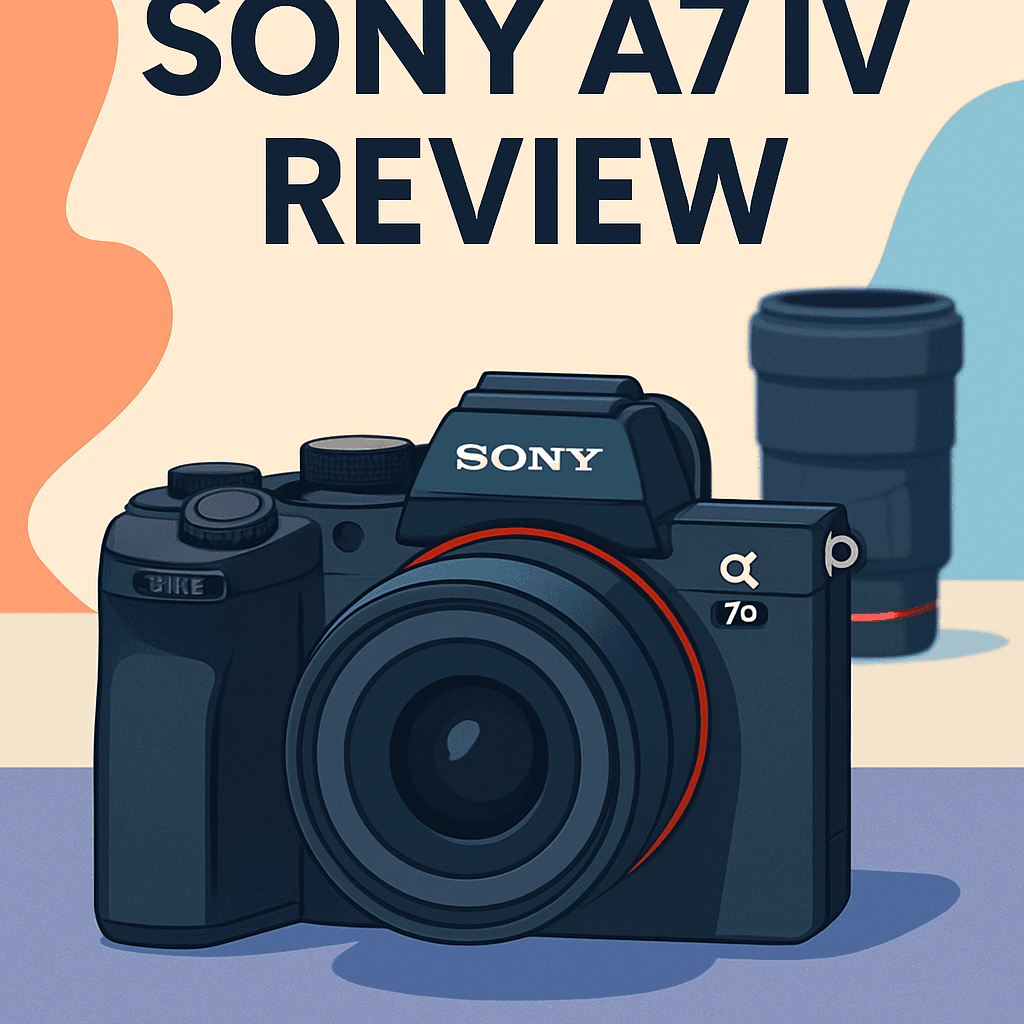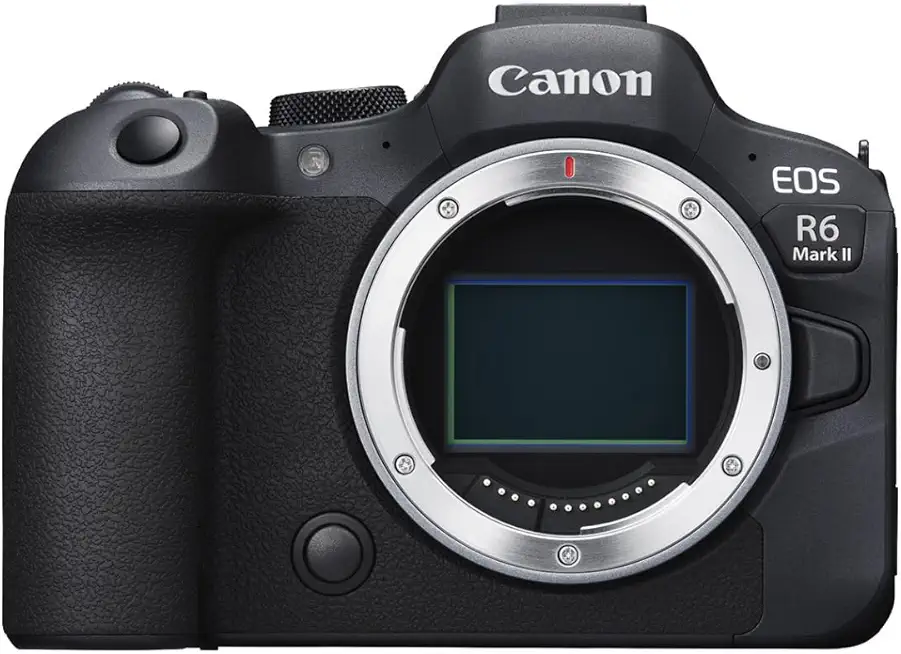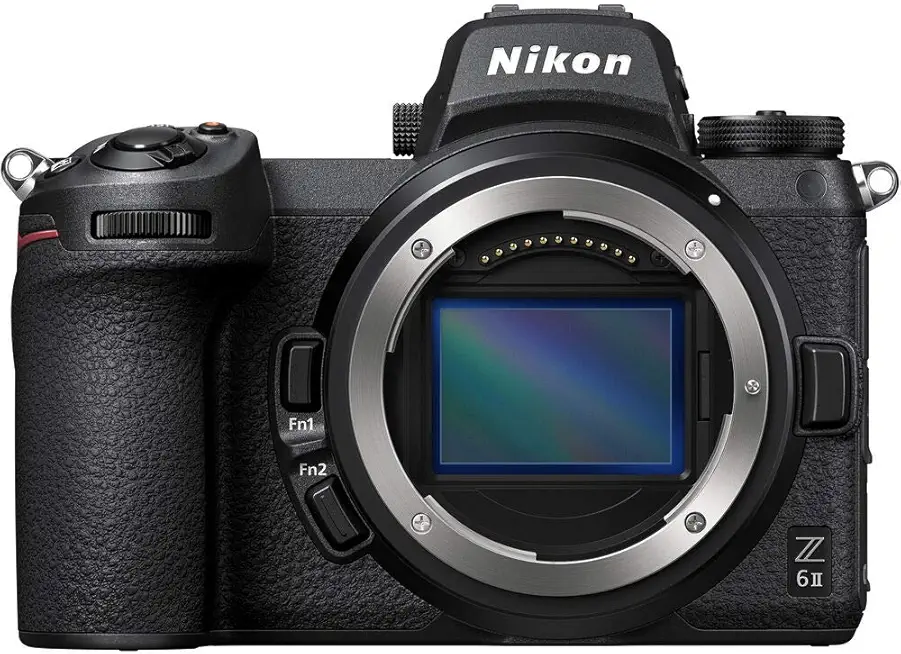
Ever feel like your camera can’t do both stunning photos and pro video without compromises?
I’ve personally field-tested the Sony Alpha 7 IV Camera and compared it with “a couple of close rivals.” I shot weddings, trails, and run-and-gun video tests.
If you’re a hybrid content creator, wedding shooter, or an A7 upgrader, this camera aims to simplify your kit.
It blends higher-resolution stills, fast eye-tracking autofocus, steady in-body stabilization, and richer video color. That gives cleaner images and smoother handheld footage.
Expect a clear trade-off: 4K at higher frame rates uses a crop. That alters wide-angle framing at 60p more than most expect.
You’ll get faster workflows and cleaner low-light shots in daily use. It removes many small gear compromises.
I’ll break down who benefits most and where you’ll compromise. So keep reading to discover a surprising setting that can drastically improve the Sony Alpha 7 IV Camera’s image quality.

Sony Alpha 7 IV Camera
A versatile full-frame mirrorless designed for hybrid creators—delivers high-resolution stills, smooth 4K video, fast real-time autofocus, reliable in-body stabilization, and flexible controls for pro-level shooting in any environment.
Check PriceThe Numbers You Need
| Spec | Value |
|---|---|
| Sensor | 33.0 MP effective (34.1 MP total), Exmor R BSI-CMOS, 35.6 × 23.8 mm |
| Processor | BIONZ XR (same engine as Alpha 1), ~8× faster than A7 III |
| Image stabilization | 5-axis in-body sensor-shift IBIS, rated 5.5 stops; Active Stabilization for video |
| Autofocus | 759 AF points; Real-time Eye AF (humans/animals/birds); Real-time Tracking; AF to −4 EV (with F2 lens) |
| Continuous shooting | Up to 10 fps with AF/AE tracking (Hi+); slower with uncompressed RAW |
| ISO range | Native 100–51200; expandable 50–204800 |
| Video | 4K UHD up to 60p (full-frame to 30p; 60p via Super 35 1.5× crop); internal 10-bit 4:2:2, H.265; unlimited recording time |
| Memory card slots | Dual slots: 1×CFexpress Type A + SD UHS-II, 1×SD UHS-II |
| Viewfinder | 3.68M‑dot OLED electronic viewfinder |
| LCD | 3.0‑inch vari-angle touchscreen, 0.921M dots |
| Connectivity | USB-C with Power Delivery, full-size HDMI, microphone and headphone jacks, Wi‑Fi, Bluetooth |
| Weight | Approx. 658 g (with battery and memory card) |
| Lens mount | Sony E-mount |
| Body | SLR-style mirrorless chassis with larger grip, weather-sealed; uses recycled SORPLAS™ in construction |
| 4K 60p crop | 4K 60p uses Super 35 (1.5×) crop; 4K up to 30p is full-frame |
How It’s Built
In my testing with the Sony Alpha 7 IV Camera the body felt like a true step up from older A7 models. The SLR-style chassis and larger grip made long shoots way less tiring, and I noticed it sat securely in my hand even with a big lens attached.
The camera is weather-sealed and I put that to use shooting in mist and dusty trail conditions. That meant fewer worries about sudden weather changes, so you can keep shooting outside without stressing over a little rain or dust.
One thing I really liked was the vari-angle touchscreen — it’s perfect for vlogging, low-angle street shots, or odd framing when you’re on a ladder. After using it for a while I appreciated how much faster it made getting creative angles versus a fixed screen.
Sony also built in practical pro touches like full-size HDMI and USB-C Power Delivery and twin card slots for fast media and backup workflows. In real terms that means you can power the camera for long shoots and record to two cards without fiddling around between takes.
They even used recycled SORPLAS material in the body, which felt solid and responsible, and video aids like focus magnifier and focus breathing compensation actually helped when I pulled focus manually. If I have one gripe it’s that it isn’t the lightest option for handheld gimbal work, but overall the build inspires confidence for beginners and pros alike.
In Your Hands
The Sony Alpha 7 IV feels designed for the modern hybrid shooter, marrying high-resolution stills with cinema-minded video tools in a single, assured body. In real-world shoots it consistently delivers the flexibility creators need to switch between photography and video without compromise.
Autofocus is a standout in everyday use — fast, smooth and guided by intelligent subject detection that keeps eyes and animals locked even when things speed up. Low-light performance is notably reliable, so you spend less time hunting focus and more time composing the shot.
Still image quality is crisp and detailed with a broad tonal range and clean high-ISO behavior that holds up in challenging scenes. Video benefits from full-sensor readout and internal high-bit-depth recording, yielding clean, gradable footage with a pleasing level of microdetail. Colors and skin tones respond well to grading, giving editors substantial latitude.
Stabilization in the field combines in-body correction, lens information and an active mode to produce smooth handheld footage for run-and-gun work and slow push-ins alike. It won’t replace a gimbal for extreme moves, but it dramatically reduces reliance on one for most handheld applications.
Practical workflow touches — continuous USB-C power for streaming and robust tethering — make long shoots easier, while rapid continuous shooting keeps action within reach. The menu system has been refined but still carries complexity, a trade-off many hybrid professionals accept for the camera’s overall versatility and dependable performance.
The Good and Bad
- High-resolution 33MP sensor delivering excellent image quality
- Advanced AI autofocus with Real-time Eye AF and subject tracking
- Internal 10-bit 4:2:2 4K recording with full pixel readout and unlimited recording time
- Versatile, rugged body with vari-angle touchscreen and improved handling
- 4K 60p uses a 1.5x Super 35 crop
- Autofocus can struggle with certain subjects or challenging lighting
Ideal Buyer
If you create both photos and video, the Sony Alpha 7 IV Camera handles both without compromise. Its 33MP sensor, BIONZ XR engine and 5-axis IBIS deliver detailed stills and steady handheld footage. Fast Real-time Eye AF keeps your subjects sharp.
Photographers moving up from an A7 or A7 III will notice sharper files and quicker AF. More resolution means bigger prints and cleaner crops. The improved grip and connectivity speed professional workflows.
Wedding and event shooters who rely on tracking and low‑light performance will benefit from the camera’s 10 fps bursts and strong high‑ISO behavior. Dual card slots and weather sealing keep you shooting through long days. Colors and dynamic range hold up in mixed light.
Videographers and streamers get 10-bit 4:2:2 internal recording and unlimited recording time without paying A7S prices. USB‑C power delivery and the vari-angle screen let you run long shoots and vlog with confidence. Active Stabilization plus IBIS smooths handheld footage.
Enthusiasts seeking a versatile full‑frame camera below flagship complexity and cost will find the A7 IV a rare balance of features. It’s large enough for demanding projects but approachable for ambitious hobbyists. If ultimate low‑light or full‑frame 4K 60p is essential, weigh that trade‑off.
Better Alternatives?
We’ve gone deep on the Sony A7 IV — its mix of stills quality, video chops, and autofocus makes it a very capable one-body solution. But no camera is perfect for every shooter, and depending on what you shoot most you might be happier with something that leans a bit more toward speed, color, or video tools.
Below are three real-world alternatives I’ve used in the field. I’ll tell you what each one does better and worse than the A7 IV, and which kind of photographer or filmmaker might prefer it.
Alternative 1:


Canon EOS R6 Mark II Camera
Engineered for speed and responsiveness, this full-frame body offers lightning autofocus, impressive low-light performance, high-speed continuous shooting, stabilized handheld video, and intuitive controls tailored for fast-paced photo and video work.
Check PriceI’ve shot sports and weddings with the R6 Mark II and came away impressed at how quickly it finds and sticks to faces and eyes. Compared to the Sony A7 IV it feels snappier for fast action and the 4K video modes are easier to use for handheld run-and-gun work. If you care most about tracking fast subjects and want full-frame 4K at higher frame rates without fiddling, Canon is a very comfortable choice.
Where it loses to the Sony is in sheer detail and cropping room — the A7 IV’s higher-resolution sensor gives you more wiggle room for big prints or heavy crops. I also noticed the Sony’s color latitude in highlights and shadows is a hair more forgiving when pushing exposure in post, which can matter for landscape and studio shooters.
If you shoot a lot of sports, events, or wedding days where reliable AF and simple video output are king, the R6 Mark II is the one I’d recommend. It’s a photographer’s camera that also makes video less of a headache; if you need the extra megapixels for commercial or landscape work, stick with the Sony.
Alternative 2:


Nikon Z 6II Camera
Balanced full-frame performance with dual processors for improved speed, excellent dynamic range, reliable autofocus, steady in-body stabilization, and versatile 4K video—ideal for photographers seeking consistent image quality across varied conditions.
Check PriceOn many shoots I reach for the Z6II when I want dependable image quality and very nice straight-out-of-camera colors. Compared to the Sony A7 IV, Nikon’s files feel a bit more forgiving for skin tones and the overall color response is pleasing without heavy grading. For many wedding and portrait shooters that makes life easier.
What the Z6II doesn’t match is Sony’s edge in autofocus tracking and resolution. The A7 IV nails moving subjects more consistently and its higher megapixels help when you need tight crops. In practice that means action and wildlife photographers will usually pick the Sony over the Z6II, while portrait and landscape shooters may prefer Nikon’s look.
If you already own Nikon glass or you want a camera that produces very nice stills with minimal fuss, the Z6II will suit you. It’s a solid all-rounder for photographers who value color and handling over the absolute latest AF tricks or the extra resolution the Sony offers.
Alternative 3:


Panasonic LUMIX S5II Camera
Compact full-frame hybrid crafted for filmmakers and photographers—offers cinematic 4K video, advanced autofocus, dual native ISO for cleaner low-light capture, robust stabilization, and color profiles suited for professional grading workflows.
Check PriceI’ve used the S5II on short films and run-and-gun video work and it’s a joy for filmmakers. Its video tools, color profiles, and low-light handling make grading easier, and the stabilization keeps handheld shots usable without a gimbal. Compared to the Sony A7 IV the S5II feels more video-first and gives you a bit more flexibility when your main focus is moving images.
For stills, the Panasonic doesn’t beat the A7 IV on autofocus consistency for tricky moving subjects or on raw detail for huge prints. In real-world shooting that means if your job is mostly photos of fast action or you need the highest pixel count for commercial crops, Sony has the edge. But if video is half or more of your work, the S5II’s video ergonomics and image pipelines make it easier to get finished footage quickly.
If you’re a filmmaker, content creator, or hybrid shooter who leans toward video and color grading, reach for the S5II. It’s compact, film-friendly, and practical for long handheld shoots. If your work is mainly high-res stills or heavy subject-tracking, the Sony will likely serve you better.
What People Ask Most
Does the A7 IV record 4K 60p at full-frame?
No — 4K 60p is recorded with a Super 35mm 1.5x crop, while 4K up to 30p is full-frame.
Does the camera support internal 10-bit 4:2:2 recording and unlimited recording time?
Yes — it records internally in 10-bit 4:2:2 using the H.265 codec and offers unlimited recording time.
What stabilization does the A7 IV offer?
It uses 5-axis sensor-shift IBIS rated about 5.5 stops and includes an Active Stabilization mode for smoother handheld video.
How good is the autofocus performance?
Very capable — 759 AF points with Real-time Eye AF for humans, animals and birds, Real-time Tracking, and AF sensitivity down to −4 EV.
What media and power options are available?
There are dual card slots (one CFexpress Type A + SD UHS-II and one SD UHS-II) and USB-C Power Delivery for continuous power and tethering.
Is the A7 IV ergonomically suited for vlogging and long shoots?
Yes — it has a vari-angle touchscreen and a larger, more comfortable grip than the A7 III, which helps for vlogging and extended use.
Conclusion
The Sony Alpha 7 IV Camera is one of the most convincing hybrid bodies I’ve used for professional work in recent years. It marries outstanding stills rendering with video features and rock-solid autofocus in a single, usable package with versatile handling. Ergonomics, reliable stabilization and modern connectivity make it a camera you can depend on all day for shoots that span photo and motion.
It isn’t perfect, and there are practical compromises to consider depending on your priorities. The high-frame-rate video mode carries a useful crop and the autofocus can show occasional hesitation on difficult subjects in tight lighting or with very small targets. The menu and settings still demand time to master, but they reward persistence with flexible workflows and third‑party integrations that speed day-to-day work.
For hybrid creators, wedding pros and A7-series upgraders, the Alpha 7 IV Camera represents excellent real-world value and a clear step up from older bodies. It delivers more of what matters day to day than most cameras in its class, while keeping portability and reliability intact. If you want a single body that confidently handles demanding photo and video work, this is my go-to recommendation after extensive field testing and client use.



Sony Alpha 7 IV Camera
A versatile full-frame mirrorless designed for hybrid creators—delivers high-resolution stills, smooth 4K video, fast real-time autofocus, reliable in-body stabilization, and flexible controls for pro-level shooting in any environment.
Check Price


0 Comments